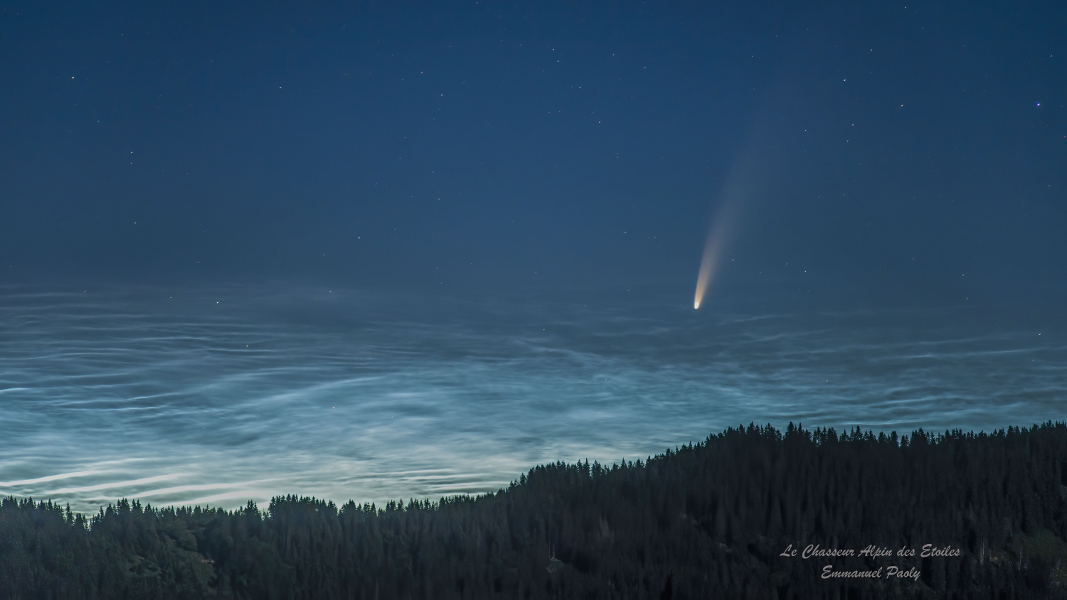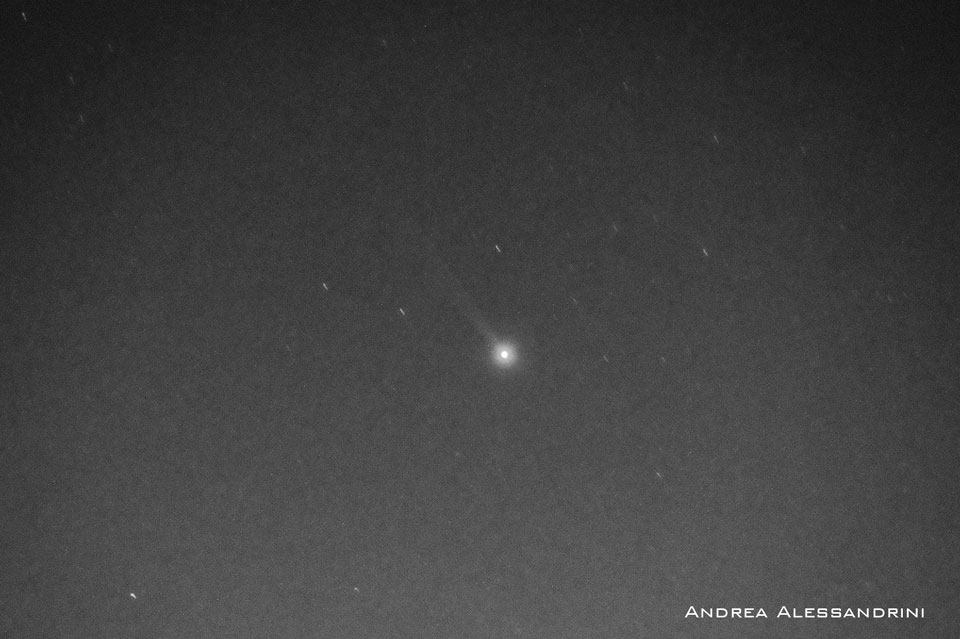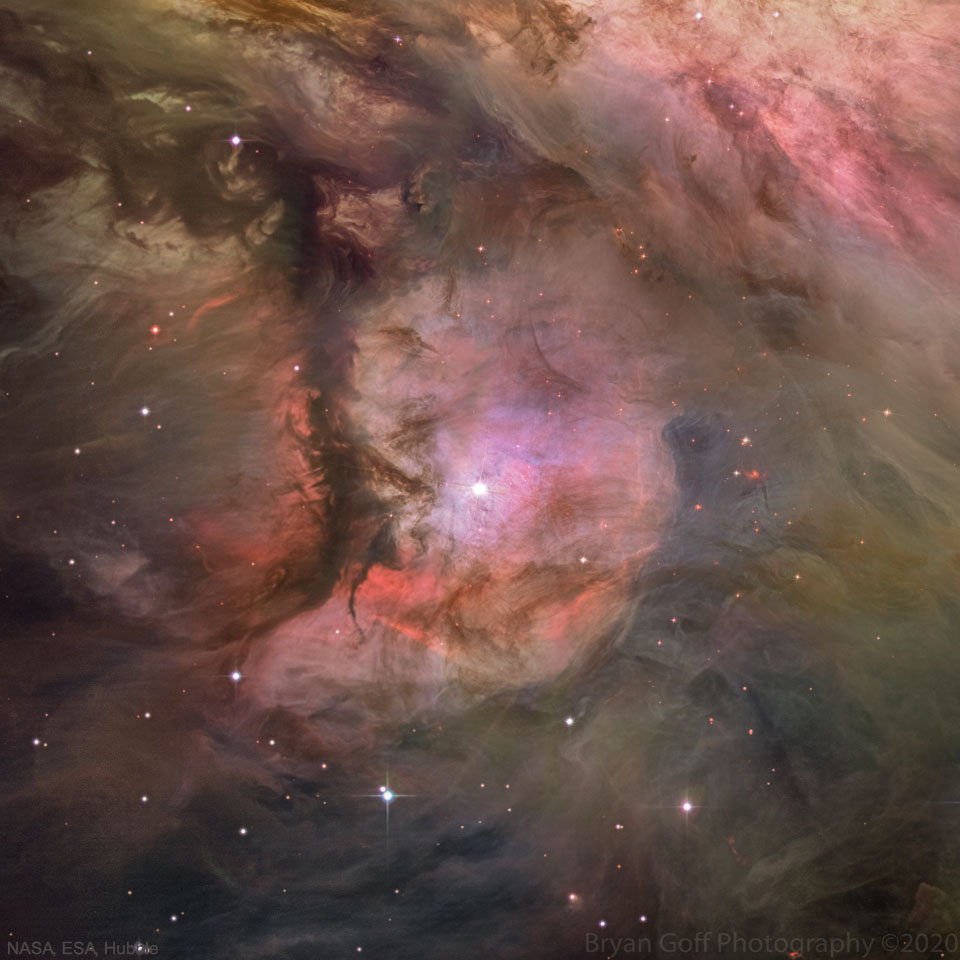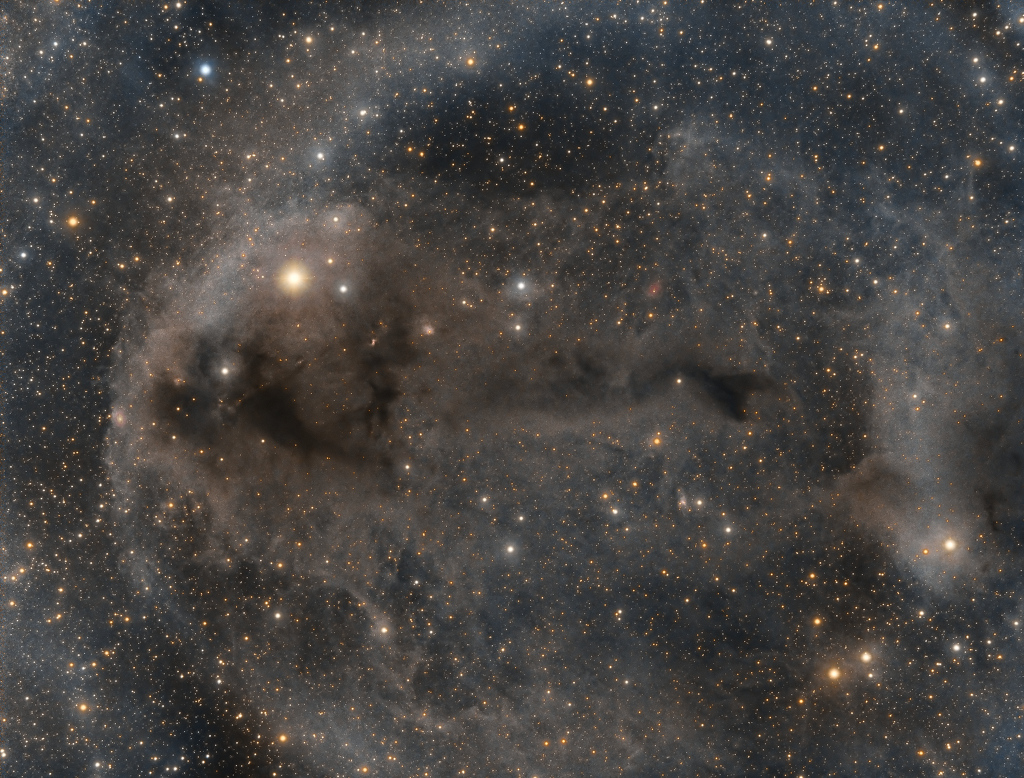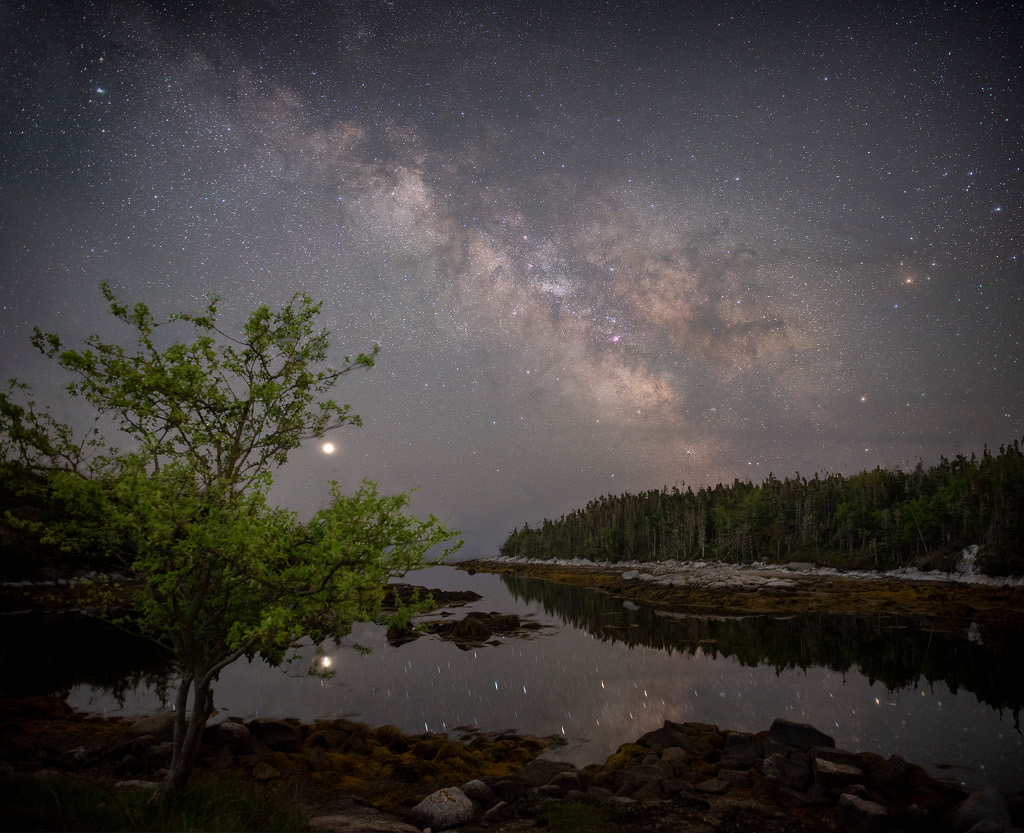
Rounding the Sun on July 3rd and currently headed for the outer Solar System, Comet NEOWISE (C/2020 F3) has been growing brighter in the predawn skies of planet Earth. From low Earth orbit it also rises before the Sun, captured above the approaching glow along the eastern horizon in this snapshot from the International Space Station on July 5. Venus, now Earth’s morning star is the brilliant celestial beacon on the right in the field of view. Above Venus you can spot the sister stars of the more compact Pleiades cluster. Earthbound skygazers can spot this comet with the unaided eye, but should look for awesome views with binoculars. via NASA https://ift.tt/38G5dWC
